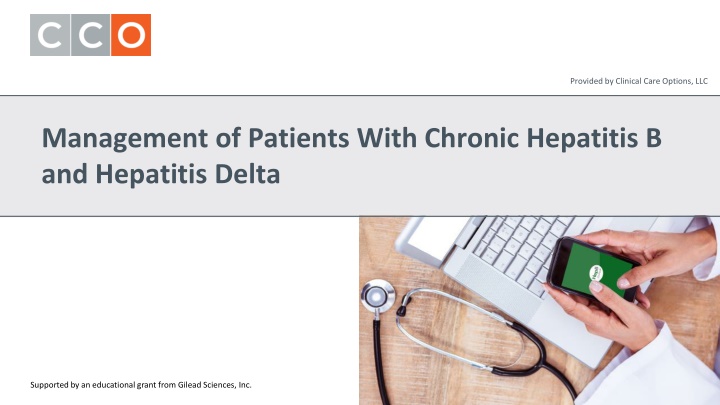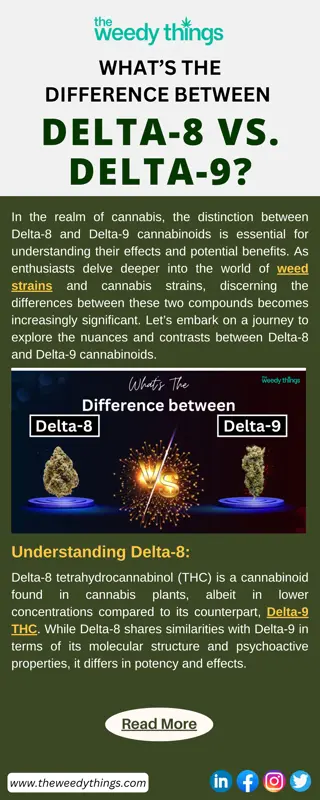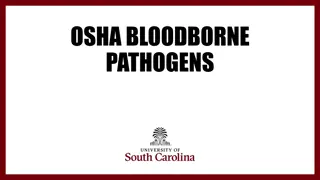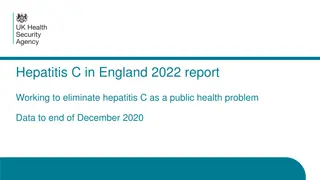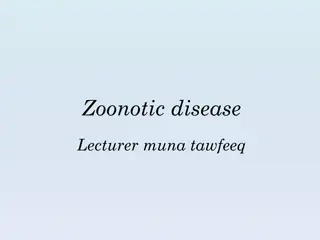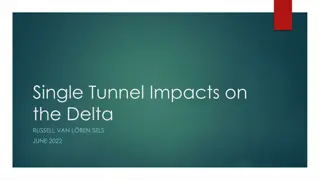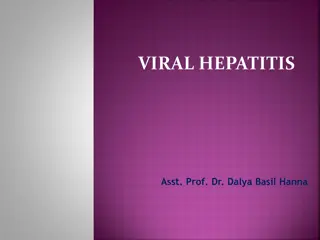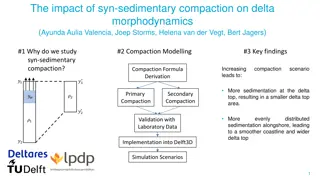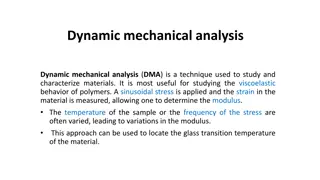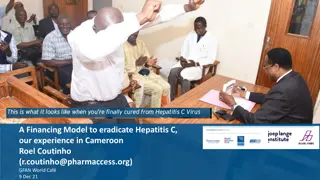Management of Patients With Chronic Hepatitis B and Hepatitis Delta
These slides provide insights into the management of patients with chronic hepatitis B and hepatitis D, including serology variations, coinfection outcomes, and superinfection consequences. Key faculty share their expertise and disclosures, offering valuable perspectives for healthcare professionals. The content emphasizes the importance of understanding the nuances in HBV and HDV infections for effective patient care.
Download Presentation

Please find below an Image/Link to download the presentation.
The content on the website is provided AS IS for your information and personal use only. It may not be sold, licensed, or shared on other websites without obtaining consent from the author.If you encounter any issues during the download, it is possible that the publisher has removed the file from their server.
You are allowed to download the files provided on this website for personal or commercial use, subject to the condition that they are used lawfully. All files are the property of their respective owners.
The content on the website is provided AS IS for your information and personal use only. It may not be sold, licensed, or shared on other websites without obtaining consent from the author.
E N D
Presentation Transcript
Provided by Clinical Care Options, LLC Management of Patients With Chronic Hepatitis B and Hepatitis Delta Supported by an educational grant from Gilead Sciences, Inc.
About These Slides Please feel free to use and share some or all of these slides in your noncommercial presentations to colleagues or patients When using our slides, please retain the source attribution: Slide credit: clinicaloptions.com These slides may not be published, posted online, or used in commercial presentations without permission. Please contact permissions@clinicaloptions.com for details
Faculty and Disclosures Maria Buti, MD Professor of Medicine Hospital Universitario Vall d'Hebron Barcelona, Spain Maria Buti, MD: consultant/advisor/speaker: Gilead, GlaxoSmithKlein, Janssen.
Faculty and Disclosures Paul Y. Kwo, MD Professor of Medicine Director of Hepatology Stanford University School of Medicine Palo Alto, California Paul Y. Kwo, MD: consultant/advisor/speaker: Aligos, Antios, Drug Farm, Eiger, GlaxoSmithKline, Gilead, Iventiva, Mallinckrodt; researcher: Altimune, Assembly, Eiger, Gilead, Janssen, Madrigal, Novo Nordisk.
Faculty and Disclosures Grace LH Wong, MD Professor Director, Medical Data Analytics Centre (MDAC) Deputy Director, Center for Liver Health Assistant Dean (Learning Experience), Faculty of Medicine The Chinese University of Hong Kong Honorary Consultant Division of Gastroenterology and Hepatology Department of Medicine and Therapeutics Prince of Wales Hospital Hong Kong Grace LH Wong, MD: consultant: AbbVie, Gilead, Janssen.
HBV and HDV Serology Varies Depending on Timing of HDV Infection Simultaneous Coinfection With HBV and HDV Usually results in spontaneous clearance of both viruses HDV Superinfection in HBV Carrier Usually results in persistent viral replication May occasionally result in HDV RNA clearance after many yr Time Time Time Anti-HDV IgG Anti-HDV IgM HBsAg HDV RNA ALT clinicaloptions.com clinicaloptions.com Slide credit: clinicaloptions.com Slide credit: clinicaloptions.com Hughes. Lancet. 2011;378:73.
Algorithm for the Evaluation of HDV HBsAg+ patients Anti-HDV + - - + HDV RNA ALT Standard of care management of HBV Normal Assess fibrosis Elastography APRI FIB-4 index Proprietary serum fibrosis markers Ultrasound with spleen and portal vein diameter Consider liver biopsy ALT Normal Previous HDV infection Elevated Check for other etiologies of elevated ALT besides HBV infection Adapted from: Shah. Gastroenterol Rep (Oxf). 2019;7:396. EASL. J Hepatol. 2023;79:433. clinicaloptions.com clinicaloptions.com Slide credit: clinicaloptions.com
2018 AASLD Guidance: Whom to Treat AASLD recommendations for antiviral therapy Adults with immune-active CHB (HBeAg negative or HBeAg positive) to decrease the risk of liver-related complications Additional factors: age, family history of HCC or cirrhosis, previous treatment history, presence of extrahepatic manifestations, presence of cirrhosis Select group of immune-tolerant adults older than 40 yr of age with normal ALT and elevated HBV DNA (1,000,000 IU/mL) and liver biopsy specimen showing significant necroinflammation or fibrosis If treatment is not indicated, actively monitor as candidacy may change with disease progression clinicaloptions.com clinicaloptions.com Slide credit: clinicaloptions.com Terrault. Hepatology. 2018;67:1560. www.aasld.org.
2018 AASLD Guidance: Defining Immune-Active vs Immune-Tolerant CHB Phase Diagnostic Criteria HBsAg present for 6 mo Serum HBV DNA >20,000 IU/mL in HBeAg+ CHB and >2000 IU/mL in HBeAg- CHB Intermittently or persistently elevated ALT and/or AST levels Liver biopsy or noninvasive tests results show chronic hepatitis with moderate or severe necroinflammation fibrosis HBsAg present for 6 mo HBeAg positive Very high HBV DNA levels (typically >1 million IU/mL) Normal or minimally elevated ALT and/or AST Liver biopsy or noninvasive test results show no fibrosis and minimal inflammation Immune-active CHB Immune-tolerant CHB clinicaloptions.com clinicaloptions.com Slide credit: clinicaloptions.com Terrault. Hepatology. 2018;67:1560. www.aasld.org.
2018 AASLD Guidance: Assessment of HBV Disease Diagnostic tests used in management of CHB ALT and/or AST HBV DNA Liver biopsy (if warranted) or noninvasive testing Quantitative HBsAg Viral resistance testing HBV genotyping clinicaloptions.com clinicaloptions.com Slide credit: clinicaloptions.com Terrault. Hepatology. 2018;67:1560. www.aasld.org.
2018 AASLD Guidance: Monitor vs Treat in HBeAg-Positive Patients Noncirrhotic HBeAg-Positive Patients With CHB ALT ULN* ALT > ULN but <2 x ULN* ALT 2 x ULN* HBV DNA >20,000 IU/mL Monitor ALT, HBV DNA every 3-6 mo Monitor HBeAg every 6-12 mo HBV DNA >20,000 IU/mL Treat HBV DNA >20,000 IU/mL Exclude other causes of ALT elevation Treat if ALT elevation persists, especially if >40 yr of age Evaluate fibrosis/inflammation Treat if F2 or A3 HBV DNA 2000-20,000 IU/mL Exclude other causes of ALT elevation Treat if ALT elevation persists, especially if >40 yr of age Evaluate fibrosis/inflammation Treat if F2 or A3 *The upper limit of normal (ULN) for ALT in healthy adults is 29-33 U/L for men and 19-25 U/L for women in AASLD guidance. The ULN of 35 U/L for men and 25 U/L for women is recommended to guide treatment. Additional note if HBV DNA 2000-20,000 IU/mL (which may represent seroconversion) Monitor HBV DNA every 1-3 mo Treat if HBV DNA >2000 IU/mL persists for >6 mo clinicaloptions.com clinicaloptions.com Slide credit: clinicaloptions.com Terrault. Hepatology. 2018;67:1560. www.aasld.org.
2018 AASLD Guidance: Monitor vs Treat in HBeAg-Negative Patients Noncirrhotic HBeAg-Negative Patients With CHB ALT ULN* ALT > ULN but <2 x ULN* ALT 2 x ULN* HBV DNA 2000 IU/mL Monitor ALT, HBV DNA every 3 mo for 1 yr, then every 6 mo HBV DNA 2000 IU/mL Treat Any Detectable HBV DNA Exclude other causes of ALT elevation Treat if ALT elevation persists, especially if >40 yr of age Evaluate fibrosis/inflammation Treat if F2 or A3 HBV DNA <2000 IU/mL Exclude other causes of ALT elevation Treat if ALT elevation persists, especially if >40 yr of age Evaluate fibrosis/inflammation Treat if F2 or A3 HBV DNA <2000 IU/mL Monitor ALT, HBV DNA every 3 mo for 1 yr, then every 6-12 mo Monitor HBsAg annually *The upper limit of normal (ULN) for ALT in healthy adults is 29-33 U/L for men and 19-25 U/L for women in AASLD guidance. The ULN of 35 U/L for men and 25 U/L for women is recommended to guide treatment. clinicaloptions.com clinicaloptions.com Slide credit: clinicaloptions.com Terrault. Hepatology. 2018;67:1560. www.aasld.org.
2018 AASLD Guidance: Monitoring of CHB Patients Not on Antiviral Therapy Immune-Tolerant CHB Inactive CHB Resolved CHB Definition of Population HBeAg negative, normal ALT, low HBV DNA HBeAg positive, high HBV DNA HBsAg loss Recommended Monitoring for Population ALT: every 3-6 mo If ALT level rises to > ULN, evaluate ALT and HBV DNA more frequently ALT and HBV DNA: every 3 mo for first yr, then every 6-12 mo If ALT level rises to > ULN, evaluate ALT and HBV DNA more frequently ALT and HBV DNA monitoring no longer required HCC surveillance Continue if individual has cirrhosis, a first-degree family member with HCC, or a long duration of infection HBeAg status: every 6-12 mo Treat if HBeAg+ with HBV DNA >20,000 IU/mL for 3-6 mo and ALT >2 x ULN HBsAg: annually Liver biopsy or noninvasive assessment of fibrosis Consider with slight, persistent ALT elevation, particularly if >40 yr of age and infected for long duration clinicaloptions.com clinicaloptions.com Slide credit: clinicaloptions.com Terrault. Hepatology. 2018;67:1560. www.aasld.org.
Hep B Consult: Young Man With HBeAg-Positive CHB, Elevated HBV DNA, and Normal ALT Here, you see recommendations for a 27-yr-old man with HBeAg-positive CHB and the following characteristics: ALT 1.2 x ULN HBV DNA 1.5 million IU/mL No liver necroinflammation or fibrosis No other comorbidities No hepatitis delta infection Enter your patient characteristics for instant guidance! clinicaloptions.com/HepBConsult clinicaloptions.com clinicaloptions.com Slide credit: clinicaloptions.com
2018 AASLD Guidance: What to Start as Initial HBV Therapy Treatment Preferred Notes Entecavir Yes High potency, high genetic barrier to resistance TAF Yes High potency, high genetic barrier to resistance TDF Yes High potency, high genetic barrier to resistance PegIFN Less safe in patients with cirrhosis, contraindicated in patients with decompensated cirrhosis Yes Adefovir No Low genetic barrier to resistance Lamivudine No Low genetic barrier to resistance Telbivudine No Low genetic barrier to resistance clinicaloptions.com clinicaloptions.com Slide credit: clinicaloptions.com Terrault. Hepatology. 2018;67:1560. www.aasld.org. EASL. J Hepatol. 2017;67:370.
2018 AASLD Guidance: Pegylated Interferon PegIFN- 2a 180 g/wk by subcutaneous injection Duration of therapy: 48 wk Yields HBeAg seroconversion in 20% to 31% and sustained off-treatment HBV DNA suppression <2000 IU/mL in 65% who achieve HBeAg to anti-HBe seroconversion Monitoring during treatment: Complete blood count every 1-3 mo TSH every 3 mo Clinical monitoring for autoimmune, ischemic, neuropsychiatric, and infectious complications Potential AEs: influenzalike symptoms, fatigue, mood disturbances, cytopenia, and autoimmune disorders in adults clinicaloptions.com clinicaloptions.com Slide credit: clinicaloptions.com Terrault. Hepatology. 2018;67:1560. www.aasld.org.
2018 AASLD Guidance: Nucleos(t)ide Analogues ETV 0.5 mg/day, TAF 25 mg/day, or TDF 300 mg/day Potent, high genetic barrier to resistance Drug-related monitoring All: HIV at BL, lactic acid during therapy if clinical concern TAF: serum creatinine and phosphorus; urine glucose and protein TDF: BL CrCl, renal monitoring if renal risk, BL bone density clinicaloptions.com clinicaloptions.com Slide credit: clinicaloptions.com Terrault. Hepatology. 2018;67:1560. www.aasld.org.
2018 AASLD Guidance: Therapy Duration on NAs For most, NA treatment duration is indefinite HBeAg-positive adults without cirrhosis who seroconvert to anti-HBe on therapy: discontinue therapy after a period of treatment consolidation if this endpoint is met HBeAg-positive adults with cirrhosis who seroconvert to anti-HBe on NA therapy: indefinite therapy, unless there is a strong competing rationale for treatment discontinuation HBeAg-negative adults with immune-active CHB: indefinite therapy clinicaloptions.com clinicaloptions.com Slide credit: clinicaloptions.com Terrault. Hepatology. 2018;67:1560. www.aasld.org.
2018 AASLD Guidance: Efficacy of First-line Antiviral Therapies in Treatment-Naive Adults With CHB Outcomes From Separate Studies (Not Head to Head) ETV TDF TAF PegIFN* HBeAg positive HBV DNA suppression, % (IU/mL) 30-42 (<2000-40,000) 61 (<50-60 IU/mL) 73 (<29) 76 (<60) HBeAg loss, % 32-36 22-25 22 -- HBeAg seroconversion, % 29-36 21-22 18 21 Normalization ALT, % 34-52 68-81 -- 68 HBsAg loss, % 2-7 4-5 1 8 HBeAg negative HBV DNA suppression, % (IU/mL) 43 (<4000) 90-91 (<50-60) 90 (<29) 93 (<60) Normalization ALT, % 59 78-88 81 76 HBsAg loss,% 4 0-1 <1 0 *Assessed 6 mo after completion of 12 mo of therapy. Assessed after 3 yr of continuous therapy. Assessed after 2 yr of continuous therapy. HBV DNA <2000-40,000 IU/mL for pegIFN; <60 IU/mL for ETV and TDF; <29 IU/mL for TAF. HBV DNA <20,000 IU/mL for pegIFN; <60 IU/mL for ETV and TDF; <29 IU/mL for TAF. ALT normalization defined by laboratory normal rather than <35 U/L for men and <25 U/L for women. clinicaloptions.com clinicaloptions.com Slide credit: clinicaloptions.com Terrault. Hepatology. 2018;67:1560. www.aasld.org.
2018 AASLD Guidance: Criteria for Selecting ETV vs TAF vs TDF Comparative Measure ETV TAF TDF Dose 0.5 mg/day 25 mg/day 300 mg/day Presence of LAM resistance Increase dose Active Active Anticipated pregnancy Pregnancy Category C No human data in pregnancy Pregnancy Category B Decrease dose if CrCl <50 mL/min Do not use if CrCl <15 mL/min or if on dialysis* Decrease dose if CrCl <50 mL/min Renal disease Bone disease Recommended Recommended Recommended Only recommended in addition to complete ART regimen HIV coinfection Coformulated ART regimen Coformulated ART regimen Cost considerations Generic available No generic Generic available *By contrast, EASL guidelines recommend either ETV or TAF in patients receiving hemodialysis. Since February 2019, TAF prescribing information notes that no dose adjustment is necessary in individuals with CrCl 15 mL/min or in individuals with CrCl <15 mL/min who are receiving hemodialysis. clinicaloptions.com clinicaloptions.com Slide credit: clinicaloptions.com Terrault. Hepatology. 2018;67:1560. www.aasld.org.
Hep B Consult: Middle-Aged Woman With HBeAg-Negative CHB, Elevated HBV DNA and ALT Here, you see recommendations for a 45-yr-old woman with HBeAg-negative CHB and the following characteristics: ALT 2.7 x ULN HBV DNA 455,000 IU/mL No liver necroinflammation or fibrosis No other comorbidities No hepatitis delta infection Enter your patient characteristics for instant guidance! clinicaloptions.com/HepBConsult clinicaloptions.com clinicaloptions.com Slide credit: clinicaloptions.com
Hep B Consult: Case Revisited What if she were older or had risk of renal or bone disease? In this case, the guidelines recommend treatment with ETV or TAF, as TDF is associated with decreases in bone density and renal function Enter your patient characteristics for instant guidance! clinicaloptions.com/HepBConsult clinicaloptions.com clinicaloptions.com Slide credit: clinicaloptions.com
2018 AASLD Guidance: Cirrhosis HBsAg-Positive Patients With CHB Decompensated Cirrhosis Compensated Cirrhosis Any HBV DNA Any ALT HBV DNA <2000 IU/mL Any ALT HBV DNA >2000 IU/mL Any ALT Treat with ETV, TAF, or TDF If treatment not offered, monitor HBV DNA every 3-6 mo Treat for HBV DNA elevation and/or clinical decompensation PegIFN is not contraindicated, but NA therapy considered safer Treat with ETV or TDF TAF may be considered Monitor closely for AEs Refer for consideration of liver transplantation if no stabilization PegIFN contraindicated owing to safety concerns Treat with ETV, TAF, or TDF based on criteria for HBeAg+ and HBeAg- infected patients clinicaloptions.com clinicaloptions.com Slide credit: clinicaloptions.com Terrault. Hepatology. 2018;67:1560. www.aasld.org.
2018 AASLD Guidance: Liver Transplantation Pretransplantation Posttransplantation Administer ETV, TAF, or TDF to reduce HBV DNA level and risk of HBV reinfection Low-Risk Patients Undetectable HBV DNA at LT High-Risk Patients Detectable HBV DNA at LT Drug-resistant HBV HIV or HDV coinfection Poor compliance to tx Posttransplantation Lifelong prophylactic therapy with NAs recommended Treat with ETV, TAF, or TDF No HBIg or HBIg for 5-7 days Treat with HBIg + ETV, TAF, or TDF HBsAg- patients receiving HBsAg-/ anti-HBc+ grafts should be managed with lifelong NA therapy without HBIg clinicaloptions.com clinicaloptions.com Slide credit: clinicaloptions.com Terrault. Hepatology. 2018;67:1560. www.aasld.org.
2018 AASLD Guidance: HIV Coinfection All patients with HBV and HIV coinfection should receive HIV antiretroviral therapy that includes 2 drugs with activity against HBV (TAF or TDF) + (FTC or 3TC) + third agent active against HIV recommended Do not use TDF, 3TC, or ETV as single agents ETV should only be used in combination with a fully suppressive HIV regimen Do not use adefovir or telbivudine If HIV therapy is altered, drugs effective against HBV should not be stopped to avoid hepatitis flares clinicaloptions.com clinicaloptions.com Slide credit: clinicaloptions.com Terrault. Hepatology. 2018;67:1560. www.aasld.org.
2018 AASLD Guidance: HCV Coinfection Measure HCV RNA, HBV DNA before selecting a therapeutic strategy Not Eligible for HBV Treatment HCV treatment with DAAs is indicated for patients with HCV viremia HBsAg-/anti-HBc+ HBsAg+ HBV treatment is determined by HBV DNA and ALT levels by same criteria used in monoinfected patients Monitor ALT levels at BL, at the end of HCV treatment, and during follow-up Monitor HBV DNA levels every 4-8 wk during HCV treatment and for 3 mo after HCV treatment Monitor those not eligible for HBV treatment during and after HCV treatment based on HBsAg status Monitor HBV DNA and HBsAg if ALT levels increase or fail to normalize during or after HCV treatment clinicaloptions.com clinicaloptions.com Slide credit: clinicaloptions.com Terrault. Hepatology. 2018;67:1560. www.aasld.org.
2018 AASLD Guidance: HDV Dual Infection Treat with pegIFN-alfa for 12 mo Treatment success is undetectable HDV RNA 24 wk after completing treatment HDV RNA assessment warranted if ALT elevation occurs following treatment because of the high rates of relapse May refer patients to specialized centers that offer access to experimental therapies for HDV In patients with elevated HBV DNA, concurrent treatment with ETV, TAF, or TDF recommended Beyond the guidelines: bulevirtide is an entry-inhibitor being evaluated for use by the FDA clinicaloptions.com clinicaloptions.com Slide credit: clinicaloptions.com Terrault. Hepatology. 2018;67:1560. www.aasld.org.
2018 AASLD Guidance: Pregnancy and Breastfeeding Pregnant people with immune-active hepatitis should be treated per recommendations for nonpregnant people In HBsAg+ pregnant people with HBV DNA >200,000 IU/mL, antiviral therapy recommended to prevent perinatal transmission TDF preferred due to its potency and high barrier to resistance Infants born to HBsAg+ people should receive immunoprophylaxis (ie, HBV vaccination HBIg per WHO and CDC recommendations) Breastfeeding is not contraindicated in people receiving NA therapy No recommended treatments for HDV during pregnancy clinicaloptions.com clinicaloptions.com Slide credit: clinicaloptions.com Terrault. Hepatology. 2018;67:1560. www.aasld.org.
2018 AASLD Guidance: Immunosuppressive Therapy or Chemotherapy Screen for HBsAg and anti-HBc before initiation of immunosuppressive or cytotoxic therapy If HBsAg+ and anti-HBc+, give prophylactic NA therapy If HBsAg- and anti-HBc+, either give prophylactic NA therapy or monitor ALT, HBV DNA, and HBsAg If monitoring chosen, measure HBV DNA every 1-3 mo; treat with an NA upon first sign of reactivation (ie, HBV DNA elevation, HBsAg seroreversion) All patients receiving anti-CD20 therapy (eg, rituximab) or undergoing stem cell transplantation should receive anti-HBV prophylaxis, regardless of HBsAg status Preferred prophylaxis: ETV, TAF, or TDF during and for 6-12 mo after immunosuppressive therapy clinicaloptions.com clinicaloptions.com Slide credit: clinicaloptions.com Terrault. Hepatology. 2018;67:1560. www.aasld.org.
2017 EASL Guidelines: Criteria for Treatment of CHB Standard Indications HBV DNA, IU/mL ALT Liver Disease + + >2000 > ULN* Moderate necroinflammation or fibrosis + + Any Any Cirrhosis + + >20,000 >2 x ULN* Any *ULN ~40 IU/L. Other Indications, Even if Standard Indications Are Not Met CHB and family history of HCC or cirrhosis with extrahepatic manifestations HBeAg positive, high HBV DNA, persistently normal ALT, and aged >30 yr If treatment is not indicated, actively monitor as candidacy may change with disease progression clinicaloptions.com clinicaloptions.com Slide credit: clinicaloptions.com EASL. J Hepatol. 2017;67:370.
2017 EASL Guidelines: Monitoring Frequency in CHB Patients Not Eligible for Antiviral Therapy HBeAg Negative Monitoring Frequency HBeAg Positive HBV DNA <2000 IU/mL HBV DNA 2000 IU/mL ALT Every 3 mo for first yr, then every 6 mo At least every 3 mo Every 6-12 mo HBV DNA Every 6-12 mo Periodically (every-3 yr is suggested) Annually Noninvasive markers of liver fibrosis Every 12 mo Periodically (every 2-3 yr is suggested) Annually Quantitative assessment of HBsAg helpful for determining frequency of follow-up If HBsAg <1000 IU/mL: ALT every 12 mo, HBV DNA and liver fibrosis every 3 yr If HBsAg 1000 IU/mL: ALT every 6 mo, HBV DNA and liver fibrosis every 2 yr Follow for life if patient meets no treatment indication within first 3 yr of follow-up Additional recommendations clinicaloptions.com clinicaloptions.com Slide credit: clinicaloptions.com EASL. J Hepatol. 2017;67:370.
Hep B Consult: Young Man With HBeAg-Positive CHB, Elevated HBV DNA, and Normal ALT Here, you see recommendations for a 27-yr-old man with HBeAg-positive CHB and the following characteristics: ALT 1.2 x ULN HBV DNA 1.5 million IU/mL No liver necroinflammation or fibrosis No other comorbidities No hepatitis delta infection Enter your patient characteristics for instant guidance! clinicaloptions.com/HepBConsult clinicaloptions.com clinicaloptions.com Slide credit: clinicaloptions.com
2017 EASL Guidelines: What to Start as Initial HBV Therapy Treatment Preferred Notes Entecavir Yes High potency, high genetic barrier to resistance TAF Yes High potency, high genetic barrier to resistance TDF Yes High potency, high genetic barrier to resistance PegIFN Should only be considered as initial therapy for patients with mild/moderate CHB or selected patients with compensated cirrhosis (no portal hypertension) Less safe in patients with cirrhosis, contraindicated in patients with decompensated cirrhosis Adefovir No Low genetic barrier to resistance Lamivudine No Low genetic barrier to resistance Telbivudine No Low genetic barrier to resistance clinicaloptions.com clinicaloptions.com Slide credit: clinicaloptions.com EASL. J Hepatol. 2017;67:370.
2017 EASL Guidelines: Indications for Choosing ETV, TAF vs TDF When to prioritise TAF over ETV: Previous nucleoside exposure Lamivudine with or without adefovir resistance HIV/HBV coinfection No dose adjustment for CrCl 15 mL/min Indications for using ETV or TAF over TDF: Aged >60 yr Bone disease Chronic steroids or other meds that affect bone History of fragility fracture Osteoporosis Renal abnormalities eGFR <60 mL/min/1.73 m2 Albuminuria >30 mg or moderate proteinuria Low phosphate (<2.5 mg/dL) Hemodialysis When to prioritise ETV over TAF: If less expensive (generic available) Dosing guidelines for CrCl <15 mL/min clinicaloptions.com clinicaloptions.com Slide credit: clinicaloptions.com EASL. J Hepatol. 2017;67:370.
Hep B Consult: Middle-Aged Woman With HBeAg-Negative CHB, Elevated HBV DNA and ALT Here, you see recommendations for a 45-yr-old woman with HBeAg-negative CHB and the following characteristics: ALT 2.7 x ULN HBV DNA 455,000 IU/mL No liver necroinflammation or fibrosis No other comorbidities No hepatitis delta infection Enter your patient characteristics for instant guidance! clinicaloptions.com/HepBConsult clinicaloptions.com clinicaloptions.com Slide credit: clinicaloptions.com
Hep B Consult: Case Revisited What if she were older or had risk of renal or bone disease? In this case, the guidelines recommend treatment with ETV or TAF, as TDF is associated with decreases in bone density and renal function Enter your patient characteristics for instant guidance! clinicaloptions.com/HepBConsult clinicaloptions.com clinicaloptions.com Slide credit: clinicaloptions.com
2017 EASL Guidelines: Decompensated Cirrhosis Patient should be referred to specialist and treated immediately using NA with high resistance barrier, regardless of HBV DNA levels Preferred: ETV or TDF (TAF may be an option, but studies lacking) With ETV, increase dose to 1 mg QD Monitor closely for drug tolerability, rare AEs (eg, lactic acidosis, kidney dysfunction) Close monitoring strongly recommended in those with MELD score >22 and impaired renal function Assess for liver transplantation PegIFN is contraindicated in patients with decompensated cirrhosis clinicaloptions.com clinicaloptions.com Slide credit: clinicaloptions.com EASL. J Hepatol. 2017;67:370.
2017 EASL Guidelines: Liver Transplantation All individuals with HBV-related liver disease on a transplant waiting list should be referred to a specialist and should receive treatment with NA After liver transplantation, patients should receive combination of potent NA plus HBIg to prevent HBV recurrence Those at low risk for recurrence (eg, negative for HBV DNA at time of transplant) can discontinue HBIg but must continue prophylaxis with potent NA HBsAg-negative patients receiving livers from anti-HBc positive donors should receive prophylaxis with NA Typically lifelong prophylaxis with lamivudine clinicaloptions.com clinicaloptions.com Slide credit: clinicaloptions.com EASL. J Hepatol. 2017;67:370.
2023 EASL HDV Guidelines All people who are HBsAg+ should be screened for HDV All people with CHD should be considered for antiviral treatment Recommended in those with compensated liver disease: pegIFN- for 48 wk, regardless of on-treatment response (if well tolerated) or bulevirtide for long-term treatment Dual therapy with pegIFN- and bulevirtide may be considered in patients with partial response to monotherapy In those with ongoing HBV DNA replication (persistently >2000 IU/mL) or cirrhosis (compensated or decompensated): NA therapy should be given clinicaloptions.com clinicaloptions.com Slide credit: clinicaloptions.com EASL. J Hepatol. 2023;79:433.
2017 EASL Guidelines: HIV or HCV Coinfection Viral Coinfection Recommendations All patients should initiate ART, regardless of CD4+ cell count All patients should receive a fully suppressive TDF- or TAF-based ART regimen HCV treatment with DAAs may cause HBV reactivation Patients meeting standard criteria for HBV treatment should undergo NA therapy In HBsAg-positive patients receiving DAAs: consider concomitant NA prophylaxis until Wk 12 post-DAA, monitor closely In HBsAg-negative, anti-HBc positive patients receiving DAAs: monitor and test for HBV reactivation in cases of ALT elevation HIV HCV clinicaloptions.com clinicaloptions.com Slide credit: clinicaloptions.com EASL. J Hepatol. 2017;67:370.
2017 EASL Guidelines: Healthcare Workers Among healthcare workers with serum HBV DNA >200 IU/mL who are conducting exposure-prone procedures, consider NA therapy to reduce transmission risk HBsAg-positive healthcare workers with HBV DNA >200 IU/mL may receive potent NA (ie, ETV, TDF, TAF) to decrease HBV DNA levels until undetectable or at least <200 IU/mL prior to resuming exposure-prone procedures In practicing surgeons, monitoring for compliance and efficacy is required Antiviral therapy may be required even if healthcare worker does not meet standard indications for treatment HBV infection alone does not disqualify healthcare workers from surgery, dentistry, medicine, or allied health fields clinicaloptions.com clinicaloptions.com Slide credit: clinicaloptions.com EASL. J Hepatol. 2017;67:370.
2017 EASL Guidelines: Pregnancy Pregnancy Scenario Recommendations Without advanced fibrosis: consider delaying antiviral therapy until after birth With advanced fibrosis: consider pegIFN People of childbearing age, planning pregnancy in near future Screen for HBsAg First trimester Pregnant person with CHB, advanced fibrosis/cirrhosis Treat with TDF Receiving TDF: continue TDF Receiving ETV or other NA: switch to TDF Pregnant person on NA therapy Pregnant person with HBV DNA >200,000 IU/mL or HBsAg levels >4 log10 IU/mL Breastfeeding Initiate prophylaxis with TDF at gestation Wk 24-28 and continue for up to 12 wk post delivery Breastfeeding is not contraindicated in untreated, HBsAg-positive people or those receiving TDF-based therapy or prophylaxis PegIFN is contraindicated in pregnancy No recommended treatments for HDV during pregnancy clinicaloptions.com clinicaloptions.com Slide credit: clinicaloptions.com EASL. J Hepatol. 2017;67:370.
2017 EASL Guidelines: Immunosuppressive Therapy or Chemotherapy Population Recommendations All candidates for immunosuppressive therapy and chemotherapy Test for HBV markers prior to immunosuppression Treat with ETV, TAF, or TDF HBsAg-positive CHB patients HBsAg-negative, anti-HBc positive patients If at high risk for HBV reactivation, (including those undergoing stem cell transplantation or rituximab treatment in onco-hematological setting) If at moderate or low risk of HBV reactivation Antiviral prophylaxis Preemptive therapy (but not prophylaxis): HBsAg and/or HBV DNA monitored every 1-3 mo during and following immunosuppression ETV, TDF, or TAF therapy initiated in event of HBsAg seroreversion or detectable HBV DNA clinicaloptions.com clinicaloptions.com Slide credit: clinicaloptions.com EASL. J Hepatol. 2017;67:370.
2017 EASL Guidelines: Dialysis and Renal Transplantation All candidates for dialysis and renal transplantation should be tested for HBsAg, anti-HBs and anti-HBc before starting therapy If HBV seronegative, vaccination is recommended Patient Groups Action Special Notes HBsAg-positive dialysis recipients If initiating treatment, use ETV or TAF May need to adjust dose of NA based on renal function HBsAg-positive renal transplant recipients Initiate prophylaxis or treatment with ETV or TAF Monitor renal function carefully HBsAg-negative, anti-HBc positive dialysis or renal transplant recipients No prophylaxis or treatment Monitor HBsAg clinicaloptions.com clinicaloptions.com Slide credit: clinicaloptions.com EASL. J Hepatol. 2017;67:370.
